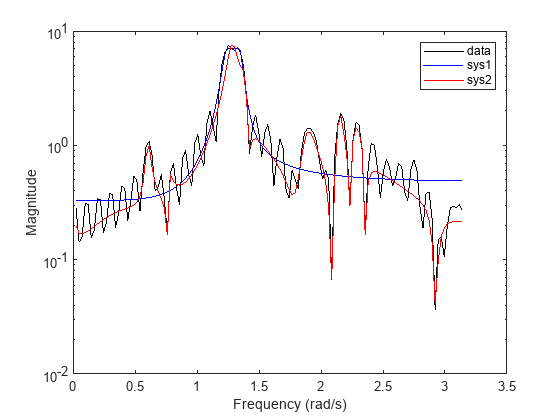spectrumest
Syntax
Description
Estimate Model
sys = spectrumest(data)sys, to
the power spectrum data in data. The spectrumest
function assumes that data is measured uniformly over a frequency
range of 0 to π rad/s. spectrumest determines the order (number of
poles) of sys automatically.
Enable Feedthrough
Examples
Input Arguments
Output Arguments
Version History
Introduced in R2022b
